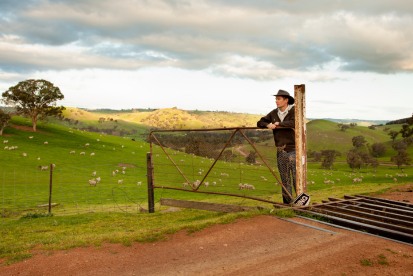You can control farm risk
How much control do you have over the risks you are exposed to in your farm business? The standard answer I get from most people is none, not many, etc. I propose you control 90% of your business's day-to-day risks.
Some years ago, I presented a financial risk management session as part of the Grain & Graze 'Optimising Farm Business Risk Workshops' in the Western Australian Wheatbelt. One of the standout moments in these workshops was when participants were asked to list all the risks facing their farm business under the categories PRICE, YIELD, and COST. Once this exercise was complete, the participants were directed to mark each risk on their list as either a risk or a uncertainty.
So what is the difference?
Risk
Risk is the potential that a chosen action or activity, including the choice of inaction, will lead to a loss, which is an undesirable outcome. This notion implies that a choice of influencing the outcome exists. Potential losses themselves may also be called "risks". Any human endeavour carries some risk, but some are much riskier than others.
Uncertainty
Uncertainty refers to a lack of certainty and involves having limited knowledge, making it impossible to describe the existing state or predict a future outcome exactly.
In other words, it's about risks you can control versus uncertainties you can't.
To the surprise of almost all participants, very few of the items they marked fell into the uncertainty category – usually only about 2-to-3 out of 25+ items (approximately 8-9%).
The realisation gave everyone in the room a new perspective and made them realise how much control they did have.
If you want to reduce the risk in your business, you need to focus on the 90% of real risks that you can choose and control.
For example, you cannot manage global grain prices (uncertainty) but can control how and when you sell (risk). You cannot control the weather (uncertainty), but you can prepare both production and financial plans for different weather patterns/events (late rain, early rain, no rain) (risk).
How do you go about identifying and managing the risk on your farm?
Farm management is a significant project management task similar to any industry. Most successful farm managers are naturally good project managers who would be welcome on any commercial project in any industry.
I am also a big fan of taking skills and practices successfully implemented in one industry and applying them to another. In our software business, we break all our projects into 90-day seasons and three-week episodes, with a retrospective review at the end of every cycle. These disciplined planning and review cycles are one of the ways we manage risk as part of the software development process, as project management and risk management are inseparable.
Many other companies run a project risk register. A risk register is standard in most well-managed project teams, as project management and risk management are inseparable.
A risk register lists all the risks your business or project faces. Each risk is then categorised and sorted so you can put actions (countermeasures) in place to help mitigate your risk.
There is no set template for a risk register. Risk registers range from very complex (often used in big projects with large teams) to very simple.
Below is an example of a risk register of moderate complexity.

For a more straightforward example, you can use colour, a list rated from pink to green based on the level of risk you perceive. You use a register like this on a wall in your office to discuss risks before deciding on countermeasures. It is often used in team meetings and works well with post-it notes.

Our software business uses a traffic light system for all of our major objectives (projects). Our team leads mark these objectives green, yellow or pink each week. If they are green, we don’t discuss them; if they are yellow, we discuss what actions or small adjustments we need to take as a team to get them back to green; and if they are pink, we put aside dedicated time to re-assess the objective/project, decide what actions we can take to mitigate the impact on the business/customers and get it back on track.

Most farm managers are very aware of the risks they face and the measures they must take to manage them. These risks tend to be a burden that all managers carry regardless of experience or ability.
Running a risk register will help you in several ways:
- It helps you identify manageable risks vs. uncertainties
- It will help you get more than one mind on the job and, therefore, have a better chance of identifying all the risks you face
- It externalises the risk (gets it out of your head) and makes it a shared responsibility and a visible, manageable issue (reduces the burden)
- It gives you peace of mind knowing that you have a known list of countermeasures to mitigate the risks you face
- It helps you deal with the risk early in a season when you are less stressed and thinking clearly
One of the main lessons I have learned over the years is that the foundations of success and happiness are focusing on the things you can control and accepting the things you can't.
Check out the F Myth (Part 1): the misconception that technical expertise alone leads to farm business success.




